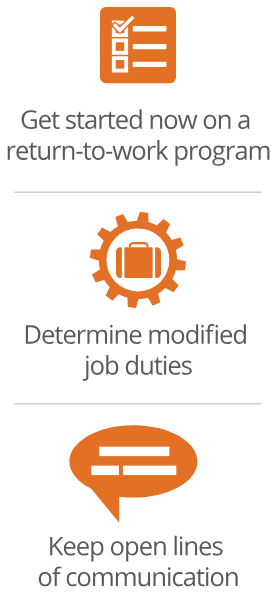Step 1: Get started now
A return-to-work program should begin before an injury occurs. Make sure you have a current record of all positions at your company including job descriptions and daily duties. Encourage cross training so that your team can cover other tasks if an injury takes someone out of work.
It may seem like a quick fix to bring someone new in, but the time and expense of hiring a new employee to replace an experienced worker is 50 to 150% of their salary.
Step 2: Determine modified job duties
The treating doctor will determine the injured employee’s ability to perform job duties. If they are unable to return to the same job, determine what parts of the job they can still do or find a different area in which the employee can make a positive contribution.
Make an offer to the injured employee for the modified position. It’s best to put it in writing, and it should include a DWC Form-073 (Texas Workers’ Compensation Work Status Report) completed by the physician.
Step 3: Keep open lines of communication
A little bit of motivation can go a long way for someone recovering from an injury. Stay in touch with the employee and check in with them. This can help them avoid feelings of isolation and the disability mindset. If the employee is back on the job with modified duties, see how they are adjusting to the new role.



